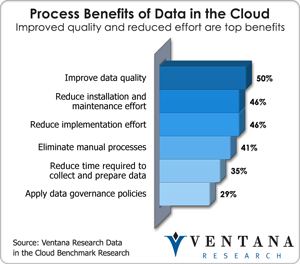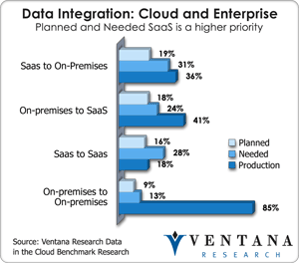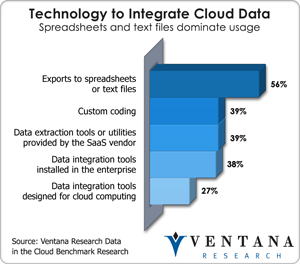Salesforce is a global software-as-a-service (SaaS) company to be reckoned with. The swarming crowds at its Dreamforce event last week were estimated to exceed 90,000. The company is rapidly growing an ecosystem that includes Sales, Service and Marketing Clouds; Force.com for building applications; and Data.com for storing data in the cloud centrally for use across Salesforce products. It is also focusing on social computing, as I outlined at the beginning of the event. Hundreds of Salesforce partners complement and in some cases compete with the company with a large range of applications and tools available on the Salesforce AppExchange.
ecosystem that includes Sales, Service and Marketing Clouds; Force.com for building applications; and Data.com for storing data in the cloud centrally for use across Salesforce products. It is also focusing on social computing, as I outlined at the beginning of the event. Hundreds of Salesforce partners complement and in some cases compete with the company with a large range of applications and tools available on the Salesforce AppExchange.
In the last couple of years Ventana Research has been closely examining support for data within and across cloud computing environments like Salesforce.com’s and dozens of others, and we have seen the need to provide an interchange with data in on-premises enterprise applications and systems. Unfortunately Salesforce, like other companies that deliver applications and platforms in the cloud, has failed to advance such interchanges. It is clear that managing data in the cloud, as our research has found, can have significant process benefits, such as improving data quality and reducing resources to establish and maintain the cloud effort.
 I was looking to find more direction from Salesforce.com at Dreamforce, as were thousands of other organizations who are now connecting their applications and data together. I found few improvements outlined for Database.com in the Winter ’13 release, and found no real substance to support organizations’ broader data needs beyond just processing data within its own environment – but organizations cannot just put all of their data in this offering for their broader business and IT needs.
I was looking to find more direction from Salesforce.com at Dreamforce, as were thousands of other organizations who are now connecting their applications and data together. I found few improvements outlined for Database.com in the Winter ’13 release, and found no real substance to support organizations’ broader data needs beyond just processing data within its own environment – but organizations cannot just put all of their data in this offering for their broader business and IT needs.
Organizations create and store larger volumes of data that needs to be utilized across business processes, within an enterprise or shared across cloud computing environments. Our research shows that a significant number of organizations (more than 40%) need or plan to add data integration for cloud computing and software as a service (SaaS). Such integration to support the needs of people and processes across applications requires many levels of plumbing. First, when organizations start using a new application that operates in the cloud, it must migrate data to the new application. Most organizations then require some level of replication and synchronization of data until their legacy application is no longer needed. Second, as new data is created within the cloud application, it inevitably must be replicated to other applications, perhaps on a daily or weekly batch basis, or maybe via real-time feed as transactions occur. This data might need to be piped to other cloud computing areas or on-premises applications and data environments, and that requires more than just some administrative tools within an application or database.
Distributed applications that create data must also have some level of consistency in their definition and use of customer, product and service information. In addition, our research has found concerns about areas such as data security, which was the top concern in 63 percent of organizations. Having dedicated software to help manage the data plumbing in the clouds and enterprise can provide better safety nets and auditing of data usage. As organizations continue to demand analytics across line-of-business areas, a third-party approach will best fit most organizations’ needs, as I point out in “Salesforce struggles to deliver on the dream of analytics.” This basically means that integrating data for analytics at any level of information management requires integration of data across the cloud.
Salesforce has not been progressive in helping organizations manage data  effectively. It still uses methods such as exportation (56%) and custom coding through APIs (39%), which are part of the problem when it comes to providing consistency, quality, security and overall efficiency to adapt to enterprise needs. Our research finds organizations are rapidly adopting dedicated tools that do a better job.
effectively. It still uses methods such as exportation (56%) and custom coding through APIs (39%), which are part of the problem when it comes to providing consistency, quality, security and overall efficiency to adapt to enterprise needs. Our research finds organizations are rapidly adopting dedicated tools that do a better job.
Salesforce does have a portfolio of partners that help with application and data integration needs across a range of business processes, which is important; our recently released Ventana Research Data Integration Value Index included in our assessment the ability to support cloud computing environments. But other vendors do more to help business and IT with their data needs. Several such vendors deserve special mention.
Informatica provides an on-premises and on-demand environment for data integration and has continued to advance its cloud computing offering as a platform for supporting a range of applications and data needs. Informatica also this month announced a new software offering to help with data integrity by ensuring that consistent data is placed in the cloud computing environment. It leverages a master data management approach, which our research finds is growing rapidly, as 29 percent of organizations have initiated new projects and 26 percent have them in planning. The software also helps consolidate instances of Salesforce and provides the ability to augment existing data with offerings from Salesforce’s Data.com and other sources, such as IMS, Moody’s and Thomson Reuters.
As another example, SnapLogic provides a dedicated cloud computing environment for componentized integration of data across applications and systems. It has been able to provide a data integration environment that analysts find easy to use to dissect their data deluge and support management’s need for analytics, and that developers can use to tailor the flow of data to the range of business processes that customers and partners might need. SnapLogic’s dedicated focus on the cloud and its leverage of partners’ and customers’ work makes it a vendor to watch.
Information Builders provides direct connectivity to Salesforce and supports a range of real-time and batch-related tools for unifying the cloud and on-premise environments. Zyme Solutions offers tools to provide consistent data across channels and partners and supports associated business processes across accounting, order management, customer service and supply chain applications.
Many organizations are not able to just consolidate applications but instead have existing applications whose data must be integrated across a range of business processes. Kapow Software provides a method for capturing data in any browser-based environment. It can also help organizations make existing applications operate on other platforms, such as mobile technology, then enable the data from the screen to be integrated into the cloud or on-premises enterprise environment. This approach simplifies the integration of applications and processes through a self-service approach that helps leverage existing investments.
As your organization looks to integrate cloud computing environments like Salesforce with the enterprise, you will not find much help from Salesforce itself. Chances are you will need help from third-party providers to build an automated and sustainable approach. Automating data activities related to the cloud is a very important task to 38 percent of organizations and growing in importance rapidly.
with the enterprise, you will not find much help from Salesforce itself. Chances are you will need help from third-party providers to build an automated and sustainable approach. Automating data activities related to the cloud is a very important task to 38 percent of organizations and growing in importance rapidly.
The challenges your organization faces with data are getting larger, and the financial benefits of data in the cloud, such as reduced TCO and reduced implementation fees, are substantive. Too much time and too many resources are wasted in manual approaches where data is transitioned inconsistently and incorrectly. Automation helps organizations rationalize their overall information management efforts.
The largest barrier to efficient information management that we found in our research is data spread across to many applications and systems, according to 67 percent of organizations, followed by multiple versions of the truth (64%). If your organization lacks an information and data strategy for cloud computing across line-of-business areas where applications are being rented frequently, you’re at risk of wasting time and money and having incorrect or out-of-date data.
I hope that Salesforce will present a better blueprint for integration technologies in the future to guide customers toward the options it has and is available from its partners. The company inevitably will need to buy a company that provides this technology to meet the needs its customers have today and will continue to have in the future.
Regards,
Mark Smith
CEO & Chief Research Officer














